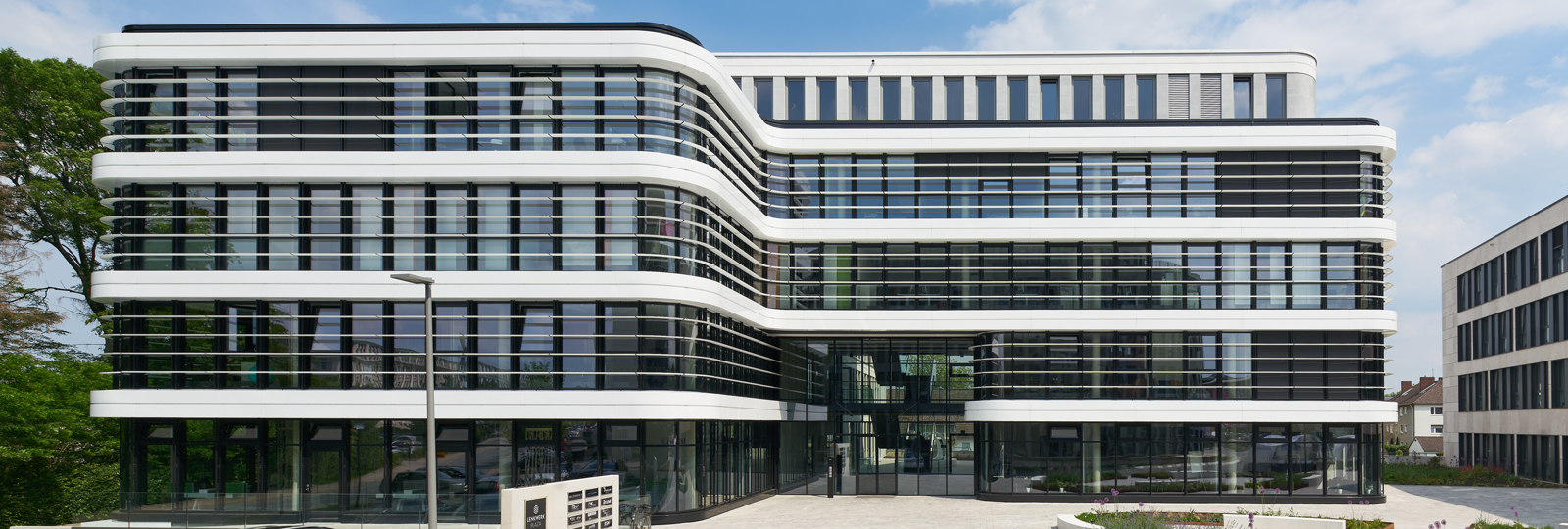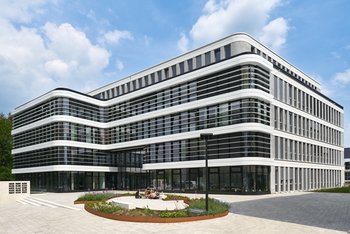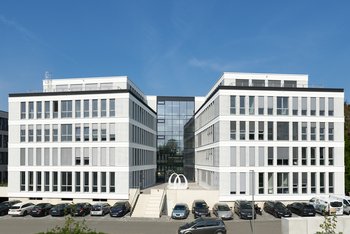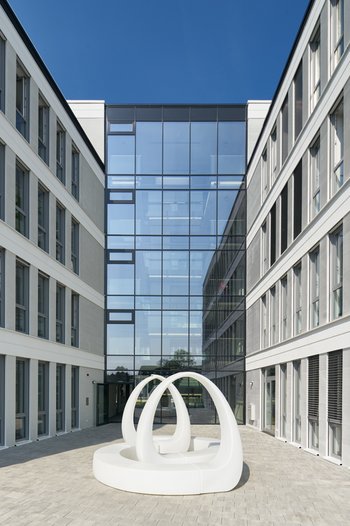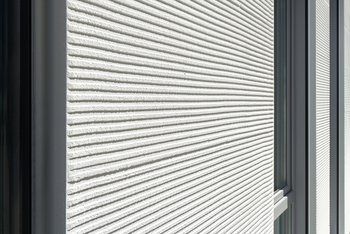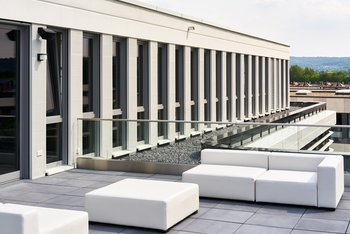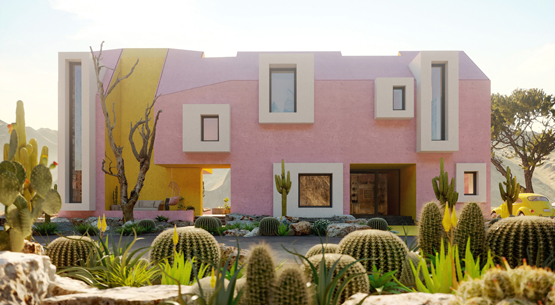From air force base to apartment block
Photos: Christian Eblenkamp
This article appeared in colore #bonbonrosa
Order the print version at: kontakt@brillux.de
The Lenkwerk district in Bielefeld has been developing steadily since 2011. An entirely new neighborhood has been created, with six modern office buildings and apartment building, centered around the former clothing office of the 'Luftwaffe' (or German air force) eastern part of the city, which was built in 1938 and is now under conservation, considered a historic monument.
Back then, project developer Christoph Borchard, Managing Director of the Borchard Group in Bielefeld, had a vision for the derelict buildings and little by little has been able to construct his dream, building by building. By his side: Frank Stopfel, the third-generation Managing Director of Stopfel Architekten und Architekt. Together, they have so far initiated and implemented this revitalization.
With the recently created Lenkwerk Plaza, the second row around the center was also completed with the historic brick buildings. Second row? Not really. Frank Stopfel and his team have managed to design the cubature, shape and orientation of the office building in such a way that it only appears slightly worn from the front row. There is no real rear side, and the "chocolate side" is clearly oriented towards the Lenkwerk axle – instead of the rear access road.
The facade of the 'Am Lenkwerk 9' four-story building (plus mezzanine level) are made up of one-third aluminum glass facade and two-thirds ETICS facade, complete with windows. Frank Stopfel developed the hybrid facade in close cooperation with the Nattkemper + Brummel GmbH painting contractors and the Brillux consulting team. Managing Director Thorsten Brummel describes the initial situation as follows: "A continuous aluminum facade was not viable for cost reasons. That's why we invested so much energy in developing a good design and a physical building solution that doesn't look like a compromise. We worked very conceptually."
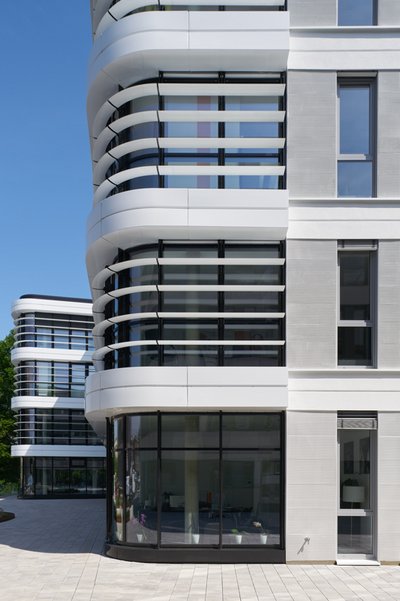
I am a champion of spacious stairwells that can be seen from the outside. It is important to achieve a high spatial quality in the entrance area and at the distribution levels, specially in office buildings where different users are housed under one roof. The more comfortable the tenants feel, the longer they stay.
Architect Frank Stopfel
The entire facade is a prototype that was realized through detailed planning and eventually through facade sections built on a 1:1 scale, and designed and assembled in the Bielefeld office.
The installation depth of the thermal insulation composite system had to be manufactured, the comb structure had to be installed, color samples had to be created. Frank Stopfel describes his challenge: "The biggest challenge in this project was certainly to develop an identity-building facade that was technically modern, sophisticated in terms of craftsmanship and so well implemented that everything still looks and functions well in a few years."
The strip effect on the aluminum facade should develop seamlessly into the ETICS facade – without the smallest offset in the area. In this way, the fence and lintel surfaces were plastered smooth and the pillars were designed with a plaster comb structure. This plaster relief creates a delicate shadow cast, makes the surfaces slightly darker overall and stands out more strongly from the smooth plaster surfaces. The dark-looking windows ultimately created the desired strip effect.
"Of course, we could have plastered everything smooth and achieved a similar effect by applying a dark coat – but it would have been purely decorative. We wanted not only an optical contrast, but also a haptic contrast with depth effect", the architect explains. It has become a facade that demanded a great deal of creativity, the highest standards and cooperative action from all those involved.
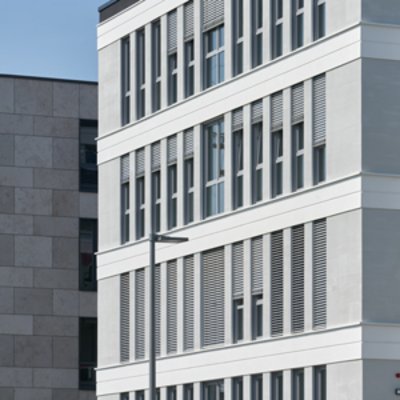
The basic and fence elements are manufactured at the factory and installed on site. The solar protection elements are integrated, the plaster with comb structure has been applied to the support plates.
Architect Frank Stopfel
Given the large number of plans hanging on screens in the Bielefeld Architectural Office - full of lines and remarks, full of colors and clues – the question of how the relationship between 2D and 3D drawing, manual sketches and personal arrangements on the construction site was formally brought up. "For me, digitalization has always been an integral part of architectural power. On the construction site, however, the printout that creates solutions, with rough additional sketches drawn on uneven surfaces still counts."
This is how an architect from the old school speaks, but also an architect from the new age, the lasting values and the everlasting demand for holistically created structural quality.
